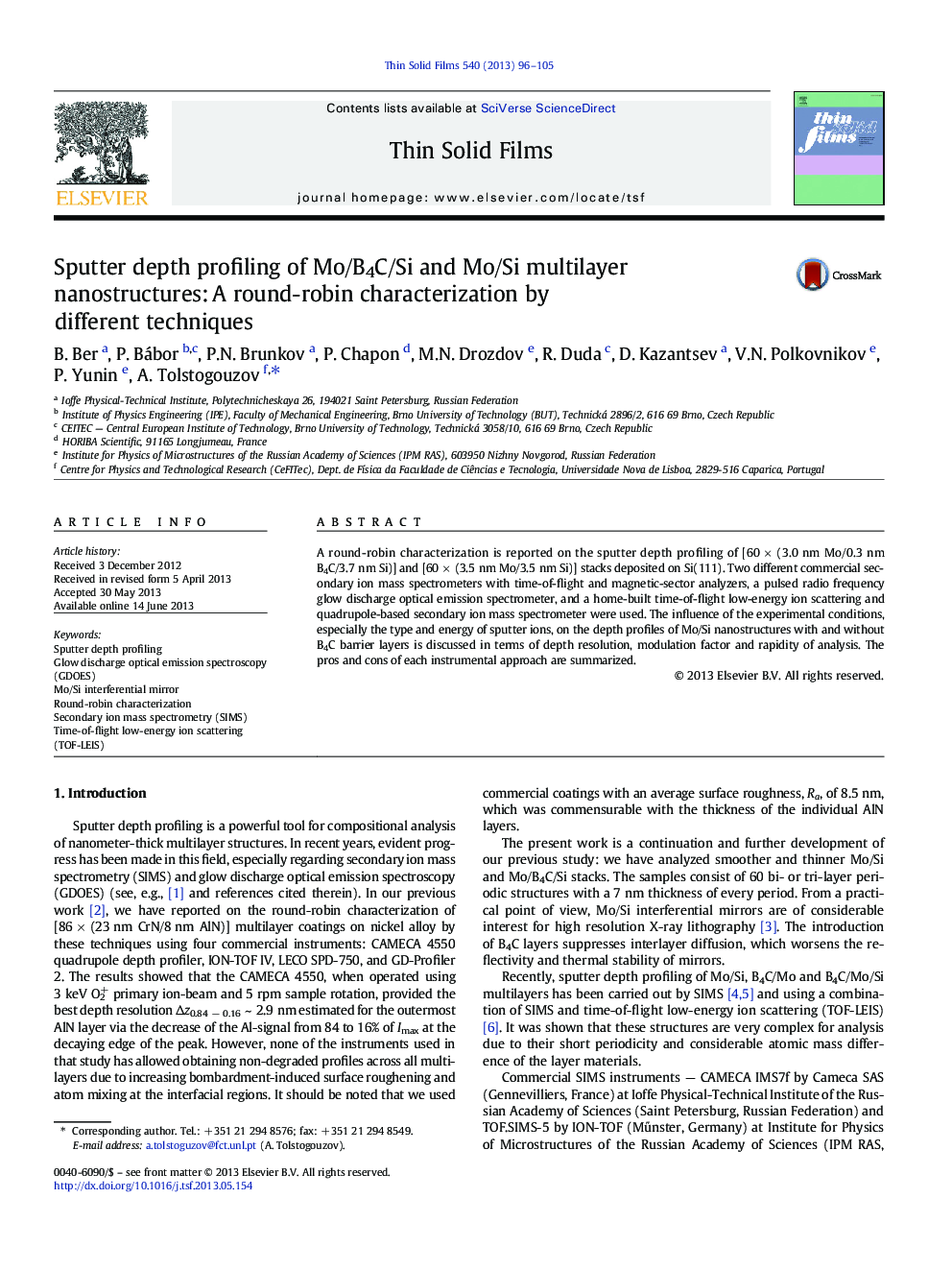| Article ID | Journal | Published Year | Pages | File Type |
|---|---|---|---|---|
| 1666059 | Thin Solid Films | 2013 | 10 Pages |
•Sputter depth profiling of thin 60 layer periods Mo/Si and Mo/B4C/Si X-ray mirrors•Different commercial and home-built instruments were used.•0.3 nm B4C layers suppress the profile degradation for glow discharge spectrometer.
A round-robin characterization is reported on the sputter depth profiling of [60 × (3.0 nm Mo/0.3 nm B4C/3.7 nm Si)] and [60 × (3.5 nm Mo/3.5 nm Si)] stacks deposited on Si(111). Two different commercial secondary ion mass spectrometers with time-of-flight and magnetic-sector analyzers, a pulsed radio frequency glow discharge optical emission spectrometer, and a home-built time-of-flight low-energy ion scattering and quadrupole-based secondary ion mass spectrometer were used. The influence of the experimental conditions, especially the type and energy of sputter ions, on the depth profiles of Mo/Si nanostructures with and without B4C barrier layers is discussed in terms of depth resolution, modulation factor and rapidity of analysis. The pros and cons of each instrumental approach are summarized.
